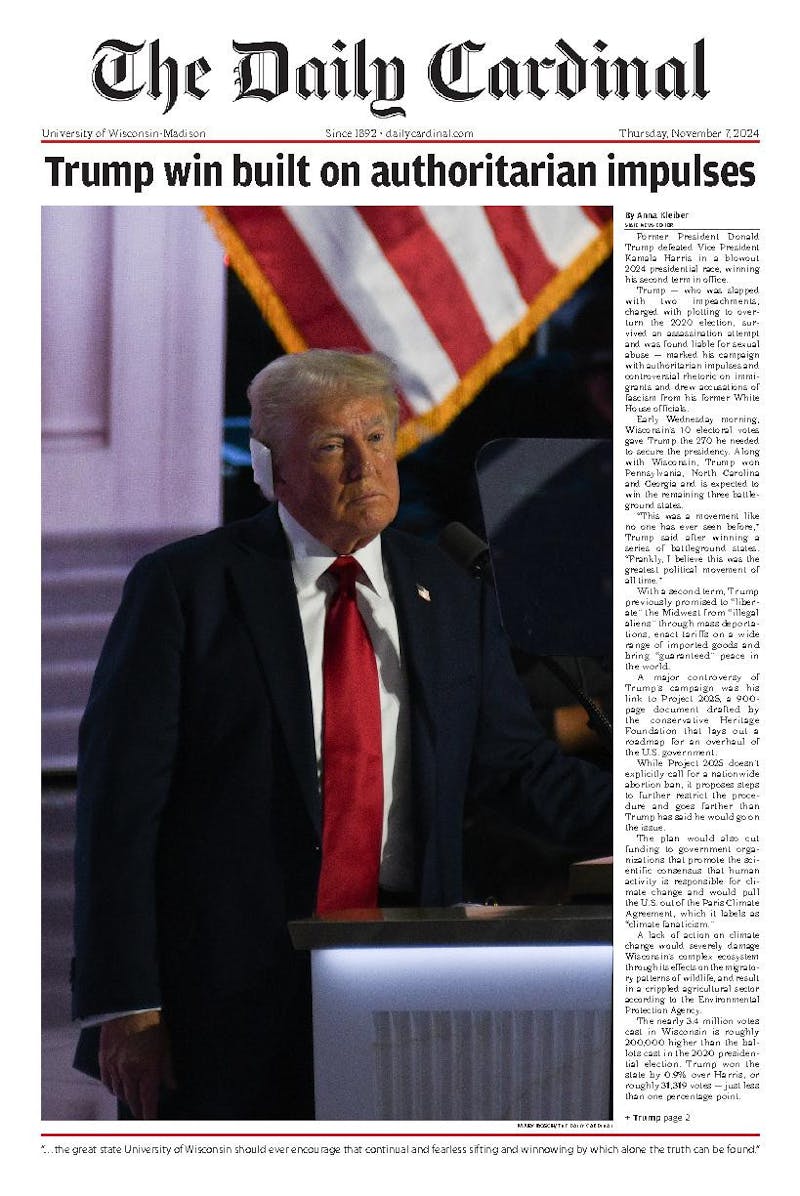On Dec. 3, more than 100 nervous biomedical engineering students gathered in the Engineering Centers Building for a student design exposition. At noon, what had begun as mere ideas culminated in the presentation of 20 prototypes, potential solutions ranging from artificial limbs to X-rays.
Initially, the students chose their projects from a list of 50 projects proposed by clients and faculty. One team designed a neck rotator for client Victor Haughton, a UW-Madison radiology professor. The rotator supports a patient's head in medical scanners and rotates it, allowing for better X-rays of the neck. Previously people with spinal injuries had to move their own necks during an X-ray, which was both painful and impractical, according to Arinne Lyman, a UW-Madison junior.
\The patient doesn't have to do any work. All they have to do is just lie there, try to be comfortable, and we will do the rotating for them,"" Lyman said.
Another team, led by UW-Madison senior Steven Pauls, installed sensors in running shoes to determine when they were worn out. The team found that running shoes last for about 300 miles, or roughly three to five months for a student who runs three miles a day.
A third team designed a test for autism in mice, since mice and humans share similar autism genes, according to UW-Madison junior Josh Anders.
""In a lot of projects the end goal is to relay things to humans because research on human interests is the most profitable and the best thing to go after as far as research is concerned,"" Anders said.
Biomedical engineering chair Robert Radwin said the event was designed to challenge students and give them the experience future employers demand from design engineers. The expo was sponsored by four companies whose engineers worked with the students to design the prototypes. This relationship is beneficial to the students, Radwin said, since they not only get hands-on experience, but they also get advice and expertise from professional engineers.
""It's been a great way to learn how to learn, which is very important for engineers, because they're often faced with solving problems that involve questions that they didn't learn in the classroom and they have to figure out the answer,"" Radwin said.
Michael Cudahy, founder and chief executive officer of Marquette Medical Systems of Milwaukee, opened the expo by urging students to use their imaginations in developing new ideas.
""Think wild and loose. Get rid of the barriers that say, 'I can't do that,'"" Cudahy said.





